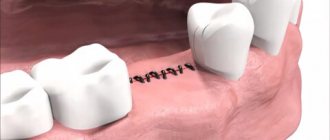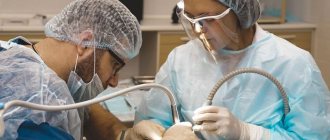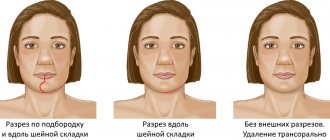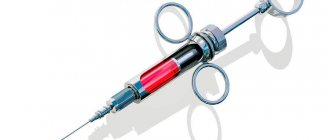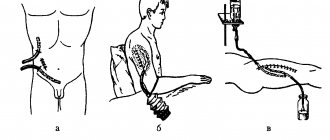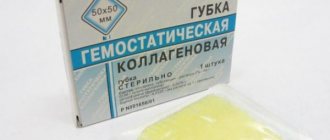home
/
Articles
/
Consequences of late suture removal
Suturing is a surgical intervention after or instead of surgery, which serves to heal the tissue. Application is resorted to only in cases where the wound is extensive and cannot heal on its own. At the moment, there is a large amount of not only medical materials for this procedure, but also many execution techniques. The technique and materials are selected solely on the basis of the nature of the wound, location and experience of the surgeon, and neither the application nor the removal process is discussed with the patient.
Now such an intervention does not take more than 15 minutes, but recovery can last for weeks. Even if you need to have stitches removed, it is not necessary to stay in the hospital, as it is now quite common to remove stitches at home with the help of specialists.
What types of seams are there and what is their difference?
Depending on the degree of tissue damage, there are many types of sutures and methods of applying them. But they are all divided into external and internal.
External sutures or, as they are also called, superficial sutures: applied to the skin or superficial mucous membranes in one layer, the threads are removed immediately after the tissue has grown together.
Internal seams (plunging) remain deep in the fabric. Most often, absorbable sutures or sutures are used that can later exit through the genitals.
Departure is paid separately - from 550 rubles
Request a call
Call:
+7 (499) 455-08-05
Regardless of what type of seam is used, there are the following types:
- skin;
- muscular;
- tendon;
- capillary;
- intestinal.
The type of suture is selected depending on the depth of the wound and its location. Another important aspect is the patient’s age, since older people have a very low ability to regenerate tissue, which is why submerged sutures are most often used on them.
Requirements for surgical suture material
Back in 1966, requirements for suture material were presented by Shchupinsky, who subsequently developed quality standards for raw materials and production of threads:
- Surgical material must withstand the sterilization process by any method.
- Catgut cannot react with tissues; and must have a reversible effect when taking medications.
- Threads should not provoke the development of allergies. If the body gave such a reaction, it means that the doctor diagnosed the patient poorly by choosing the wrong type of material.
- Material of any origin must have hypoallergenic properties.
- The raw materials from which the threads are made must have increased strength, and the threads should not be deformed until the wound has completely healed.
- The knot on synthetic and natural threads should be held firmly, and done easily and quickly.
- The material is resistant to all infections, otherwise it should not be used.
- The process of resorption of all types of threads occurs without consequences for humans.
- During manipulation, the thread must have maneuverability, be elastic, plastic and not have “memory”. The surgeon should be comfortable working with it.
- Any surgical thread should be suitable for various types of operations.
- The suture material should not be electrified.
In the place where the knot is formed, the thread should not lose its properties. This is the most important requirement, since seams and knots can be made in different ways, affecting the structure and integrity of the tissues.
Stitches are also classified into different types based on the use or application of the threads.
Typically, the classification includes the following types:
- common seams;
- cardiovascular;
- valve seams;
- orthopedic;
- dental;
- gynecological sutures;
- veterinary;
- sutures for cosmetic surgery;
- ophthalmic sutures.
Different suture materials can be used for a specific application depending on the requirements.
However, the sizes, lengths, and profiles of needles can be slightly changed for a specific case:
| Type and structure of suture material | Polydioxanone suture material |
| Seam size | The diameter of the suture will affect its handling and strength properties. The larger the size assigned to the suture material, the smaller the diameter. For example, a 7-0 suture is smaller than a 4-0 suture. |
| Surgical needles | The surgical needle allows placement of suture material into tissue with minimal residual trauma. The ideal surgical needle should be rigid enough to resist deformation, but flexible enough to bend before breaking. |
| The needle bodies can be round, cutting or reversible. | Round-bodied needles are used in friable tissues such as the liver and kidneys. The cutting needles are triangular in shape with 3 cutting edges to penetrate hard tissue. Reverse action needles have a cutting surface on a convex edge and are ideal for tough fabrics. Blunt needles are used to close the abdominal wall when dealing with loose tissue, potentially reducing the risk of infection. |
| Needle shape | The shape of the needle varies in curvature and is described as the proportion of the completed circle - ⅜, ½ and ⅝. Depending on the access to the suture area, different models are required. |
Sharp needles pierce and spread tissue with minimal incision and are used where it is necessary to prevent bleeding. Most often, such models are used in general surgery.
Why and in what cases are stitches applied?
A large cut or wound, whether in an adult or a child, may require stitches. This is done for several reasons:
- for rapid healing of the skin;
- to avoid infection in an open wound;
- for an aesthetic appearance (when a wound has formed on the face).
Only a doctor can determine whether a wound can heal on its own. In doing so, he is guided by the following principles:
- Depth of the wound. Are subcutaneous layers or fatty tissue visible in the wound?
- Disclosure. Is it possible to gently close the edges of the wound?
- Bleeding from the wound. How heavy is the bleeding and can it be stopped?
- Location of the wound. If the wound is on the face, joints, bends of the limbs, or near (inside) the genitals.
- Method of obtaining a wound.
- The presence of a foreign object in the wound.
If the wound is not that serious, then doctors simply apply a bandage and write recommendations for treatment.
Application
Used in medicine as a suture material for various surgical interventions in:
- general surgery;
- traumatology;
- vascular surgery;
- ophthalmology;
- obstetrics;
- gynecology;
- urology;
- plastic surgery;
- orthopedics;
- dentistry.
Sew up with catgut threads:
- vessels;
- soft tissues;
- parts of organs;
- bones;
- muscles;
- fascia.
Technique for applying postoperative sutures
Suturing is the final chord that completes the operation and leaves behind the entire journey of saving the patient’s life. Sutures can be continuous or interrupted. The choice depends on the location of application.
Order suture removal at home
Promotion
Included in the price:
- Antiseptic treatment
- Removing suture material (suture removal)
- Secondary treatment with antiseptic
- Applying healing ointment
- Applying a bandage
- Necessary materials and preparations
More details about the service
A continuous suture is placed on the abdominal cavity with one thread if there is no separation of the edges. There are several types of continuous seam, each of which has its own technique:
- Furrier. The first suture is placed with a knot near the corner of the wound. Subsequent ones are at the same distance from the edges of the wound.
- Purse string. Applied to temporarily close natural openings in the skin.
Intermittent or knotted sutures are stronger; after they are applied, several knots can be removed to administer medications or wash the wound. There are:
- simple;
- loop-shaped;
- suture with the formation of a skin fold;
- situational.
Despite the wide variety of interrupted sutures, they are applied using the same technology. It is necessary to have several threads in the needle from 15 to 25 cm. The stitches are placed 1.5 cm apart, after each stitch you need to tie a knot.
What material is it made from?
Surgical sutures are used to close most types of wounds. An ideal suture should allow the healing tissue to recover sufficiently so that the incision site remains closed after they are removed or resolved.
All types can be roughly divided into absorbable and non-absorbable materials. Each type has its own classification, where synthetic or natural suture threads are found, as well as monofilament or multifilament materials.
Regardless of the type and classification of suture materials, threads must provide a basic range of functions:
- The ideal seam is the minimum possible seam in width and depth.
- It should provide uniform tensile strength, hold soft tissue securely in the incision area for the required healing time, and then dissolve.
- It should be predictable (in the medical sense in the field of allergies), easy to use.
- The threads may cause minimal body reactions (temperature, itching or irritation).
- The material must form a knot securely.
The choice of the type of suture material largely depends on the clinical picture. For example, mass closure of a midline laparotomy may require the use of a PDS; a vascular anastomosis will likely require prolene, and manual suturing of an intestinal anastomosis may require Vicryl. But to ensure drainage, only a silk suture may be suitable.
What affects the time for suture removal?
The main indicator for removing a suture is wound healing. If the sutures are removed too early, the tissues may separate again, resulting in the need for repeated intervention or an unsightly scar that will then have to be removed. If the suture is removed too late, it can cause suppuration or inflammation of the tissue. It is believed that the optimal period for removal is 10 days after application, but the period may vary, depending on the type of operation:
- amputation of limbs - from 12 days to 2 weeks;
- abdominal surgery – up to 1 week;
- Caesarean section - on the 10th day;
- eye surgery – from 6 to 8 days;
- Chest surgery - 2 weeks.
But a specialist can determine whether to remove the stitches or not, based on the patient’s current condition. If it is necessary to hold the suture for a long time, daily treatment of the wound will be required to ensure that the wound does not become inflamed.
In addition, there are several types of postoperative sutures, which also have their own removal times. These include:
- Primary suture - it is applied immediately after surgery. The duration of removal depends on the operation and the current condition of the patient.
- Secondary - applied in case of consumption of the primary seam. It happens:
- early - 1-2 weeks after surgery;
- late - within a month after surgery.
It is important to remember that only a specialist can remove postoperative sutures.
Departure is paid separately - from 550 rubles
Request a call
Call:
+7 (499) 455-08-05
Possible complications
Postpartum sutures with self-absorbing threads do not require special care or removal. It is enough just to follow the general rules of personal hygiene, pay special attention to hygiene when applying sutures to the perineum:
- wash yourself after every trip to the toilet;
- dry the perineum with a towel;
- treat seams with antiseptic agents;
- change sanitary pads every 2 hours;
- wear only loose underwear;
- Wear shapewear only after the scars have completely healed.
Among the possible complications, if the doctor’s recommendations are not followed correctly, the following may occur:
- suture divergence requiring re-application;
- inflammation of the sutures, which provokes the development of various infections.
Increased pain at the suture site, as well as bleeding and increased body temperature are serious reasons to immediately consult a doctor. To avoid trouble, you should refrain from sexual intercourse for the first two months after giving birth when sutures are applied, and you are also not allowed to sit down for 2-3 weeks. A woman can only lie or stand (occasionally a half-sitting position is allowed).
Please also note that the resorption of the threads and the healing of the wound itself have different periods. So, the threads are already weakening, but the wound will still heal for some time. Normally, internal sutures do not cause any discomfort to a woman, but external sutures are often accompanied by painful sensations for the first 2-3 days. It is necessary to follow the instructions of the attending physician, then the postpartum period will fly by quickly, unnoticed, and most importantly - without complications.
What thread are used to stitch the stitches?
Now there are quite a few types of threads that surgeons use; they can be classified both by brand and by characteristics. There are these types of threads:
- Absorbable. Able to be independently excreted from the body, incapable of rejection. These types of threads are used if the tissue is able to grow together quickly.
- Non-absorbable. Used for stitching tissues of internal organs or if long-term (permanent) stitching of tissues is necessary.
Absorbable threads are created from materials such as:
- nylon;
- polypropylene;
- catgut;
- lavsan.
When using this type of thread, it is necessary to accurately determine the rate of tissue fusion, since if the thread is removed from the body earlier than necessary, this can cause a number of problems.
Non-absorbable threads consist of the following materials:
- cotton;
- linen;
- silk.
This type of thread has a number of disadvantages. The most important thing is the ability to form microbes in tissue. When choosing, the doctor is guided not only by the purpose of the thread, but also by his own experience, and the patient’s preferences are not taken into account.
Production Features
The catgut production process can be divided into 7 stages:
- Raw materials in the form of internal organs of cattle are supplied to production in wet-salted or dry form.
- The raw materials are processed with a solution of potash.
- The unusable layer is scraped off and cut into strips.
- The material is bleached.
- Twists into threads.
- The threads are fumigated with sulfur gas.
- Rinse in weak acetic acid.
- Drying.
- Polished and calibrated for thickness.
- Degreased with gasoline.
- Sterilization. Catgut threads are sterilized with antiseptic agents or gamma radiation. The radiation sterilization method is preferable, since it does not reduce the strength of the threads themselves.
- Threads are packaged together with atraumatic needles or separately in lengths (ligature), on a reel or in a cassette.
How long does it take for threads to dissolve after surgery?
Absorbable threads are used both in surgical operations on the face and in deep tissue layers, and are also used in organ transplants. The main function is to maintain tissues in a stable state until they grow together.
The main factors due to which material can be excreted from the body include:
- chemical reactions of the body when interacting with protein;
- contact with water in the body.
The rate of removal of threads from the body is influenced by the material from which it was created:
- Catgut begins to dissolve after one month, and is completely eliminated from the body after 4 months.
- Lavsan dissolves within 12-13 days, but dissolution may take 1-1.5 months. Most often this material is used in cosmetology.
- Vicryl begins to be eliminated from the body after 2-3 months.
In this case, it is necessary to follow all the rules for wound treatment, since the healing process can not only be delayed, but also cause inflammation or suppuration.
Kinds
There are 2 types of catgut coating:
1. Normal. Elastic smooth threads of cream or light brown color without coating. They are used in obstetrics, urology, gynecology, traumatology, and general surgery for suturing and ligating blood vessels. Regular catgut threads are used in the lungs, gastrointestinal tract, muscles, fascia, peritoneum and other organs. The biological strength of simple catgut is 7-10 days, and the period of complete resorption is 50-70 days.
2. Chrome plated. Threads impregnated with various preparations, coated with chrome to slow down their resorption. They are used where a suture with a longer wound retention time is needed than with conventional catgut. The biological strength of chrome-plated catgut is 15-20 days, and the period of complete resorption is 90-100 days.
There are 3 types of catgut thread thickness:
- Thin . Threads ranging in size from 0.07 to 0.699 millimeters. They are mainly used for ligation of blood vessels.
- Average _ Threads ranging in size from 0.7 to 0.899 millimeters. Mainly used for suturing soft tissues and organs.
- Thick . Threads ranging in size from 0.9 to 1.09 millimeters. Used to bind bone fragments, bring ribs together, suturing large muscles and fascia.
When should stitches be removed?
The main indicator for removing stitches is wound healing. Factors such as:
- presence of complications;
- patient's age;
- Current state;
- nature of the surgical intervention.
The location of the seam plays a special role; depending on it, the timing of thread removal is set:
- areas of the body with active blood supply - 5-6 days after application;
- shins, feet, arms, knees - approximately on day 10-12, since in such areas there is a slower recovery rate;
- infected wound - the sutures are removed the next day, as treatment and openness are necessary for speedy healing;
- clean wound - a week after application.
Only a surgeon can determine whether removal is necessary at the moment or not during an examination. In addition, for elderly people, sutures are removed no earlier than after 2 weeks, since they have a very low ability to regenerate.
HOW TO CARE FOR DISSORBABLE SUTURES
Having dealt with the question of how long it takes for the threads to dissolve, it is important to understand how to properly care for the suture after surgery so that healing proceeds safely, the threads are safely torn away, as quickly as possible, and there are no scars left at the site of the intervention.
Please pay attention to the following most important rules for caring for postoperative sutures:
- The most important point is the sterility of all manipulations performed. Before treating a wound, be sure to wash your hands and thoroughly disinfect all instruments.
- Depending on the nature of the sutured wound, it must be treated with an antiseptic - brilliant green, Fukortsin, potassium permanganate solution, hydrogen peroxide, medical alcohol. It is better to check with the supervising surgeon what exactly to use. You may have to combine medications and use them together with anti-inflammatory ointments.
- During water procedures, avoid friction; the wound can only be washed with warm water or a decoction of herbs.
- If we talk about postpartum sutures, then it is imperative to maintain intimate hygiene - this will prevent complications.
So, in order to find out how long it will take for the sutures to be successfully absorbed after surgery, you must first find out the material from which they are made. It is also worth taking into account the individual characteristics of the body: if you have a tendency to long-healing wounds, then be prepared for the fact that complete resorption of postoperative threads can take up to six months, especially if organic materials were used during suturing of the wound.
Suture removal technique
Following the correct algorithm for removing sutures and maintaining sanitary conditions allows you not only to avoid infection of the wound, but also to speed up healing. Specialists explain the procedure to the patient before performing it and place him on the couch. The procedure has the following algorithm:
- Removing the protective bandage.
- Inspect the wound and determine the number of stitches to remove.
- Treating the wound with an antiseptic. It must be carried out 2 times to prevent infection, near the wound and inside.
- The suture knot is grabbed with tweezers and lifted.
- The thread that appears after pulling is cut.
- The suture is pulled back with tweezers and the knot is removed.
- Checking the integrity of the skin.
- Treating the wound with an antiseptic.
- The area is covered with a sterile napkin and then fixed with either a bandage or adhesive tape.
This procedure is performed in a hospital, but it is now quite common for postoperative sutures to be removed at home by a specialist.
Contraindications
Not recommended:
- Use simple catgut in neurosurgery and vascular surgery.
- Use regular catgut in patients with hypersensitivity to collagen.
- Use catgut in patients who are allergic to other chemicals used in the processing and sterilization of catgut surgical sutures.
- Use in cases where long-term bonding of tissues and materials is necessary, for example, when implanting heart valves or synthetic implants. Catgut threads completely dissolve in 50 to 100 days.
How to understand that complications have arisen after suturing?
Alarming symptoms after removing the “eight” are as follows:
- heavy bleeding that lasts more than a day;
- severe pain, throbbing pain that prevents you from sleeping or leading a normal life;
- very large swelling;
- redness in the intervention area;
- blood in saliva in the first three days after the intervention;
- elevated body temperature.
In all these cases, you must consult your doctor. It is possible that stitches will have to be stitched again to avoid complications.
Remember that removing teeth does not hurt, and removing stitches does not hurt either! The main thing is that this work is performed by a professional.
